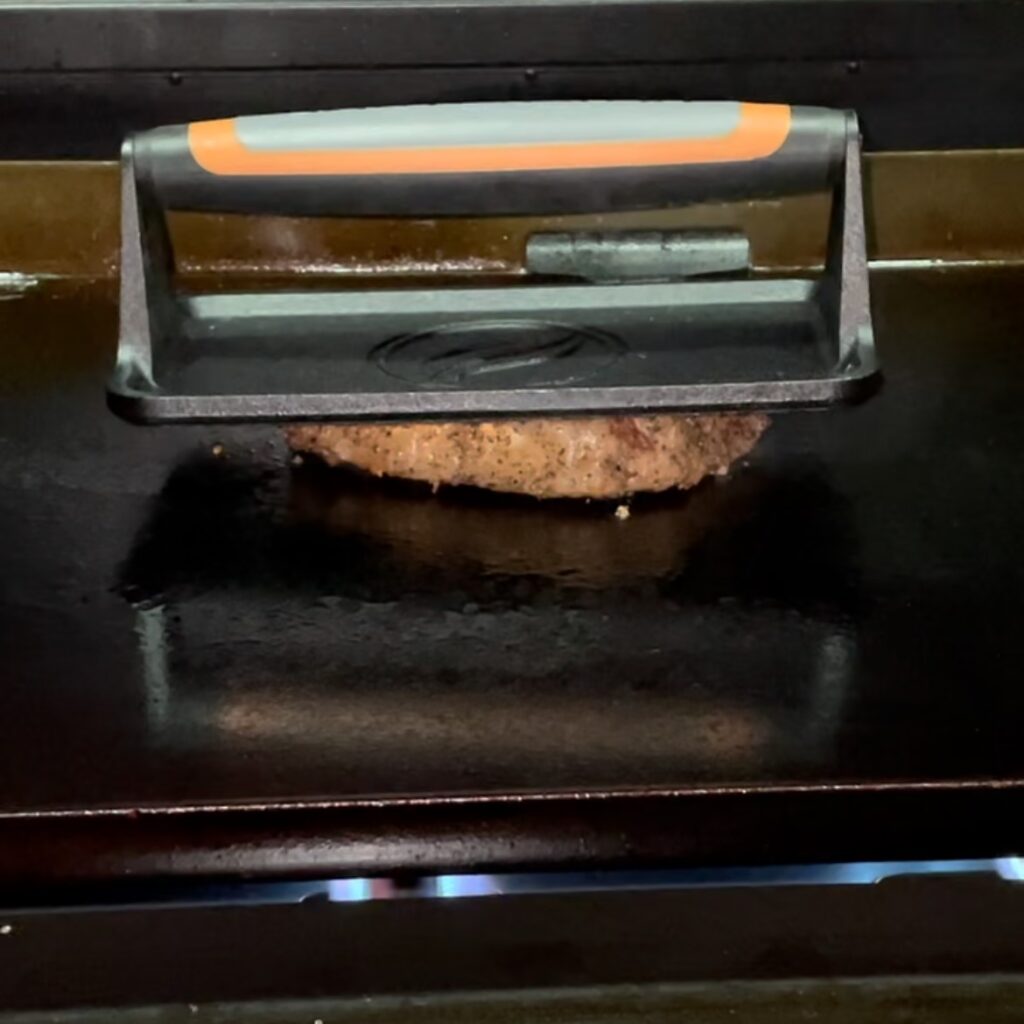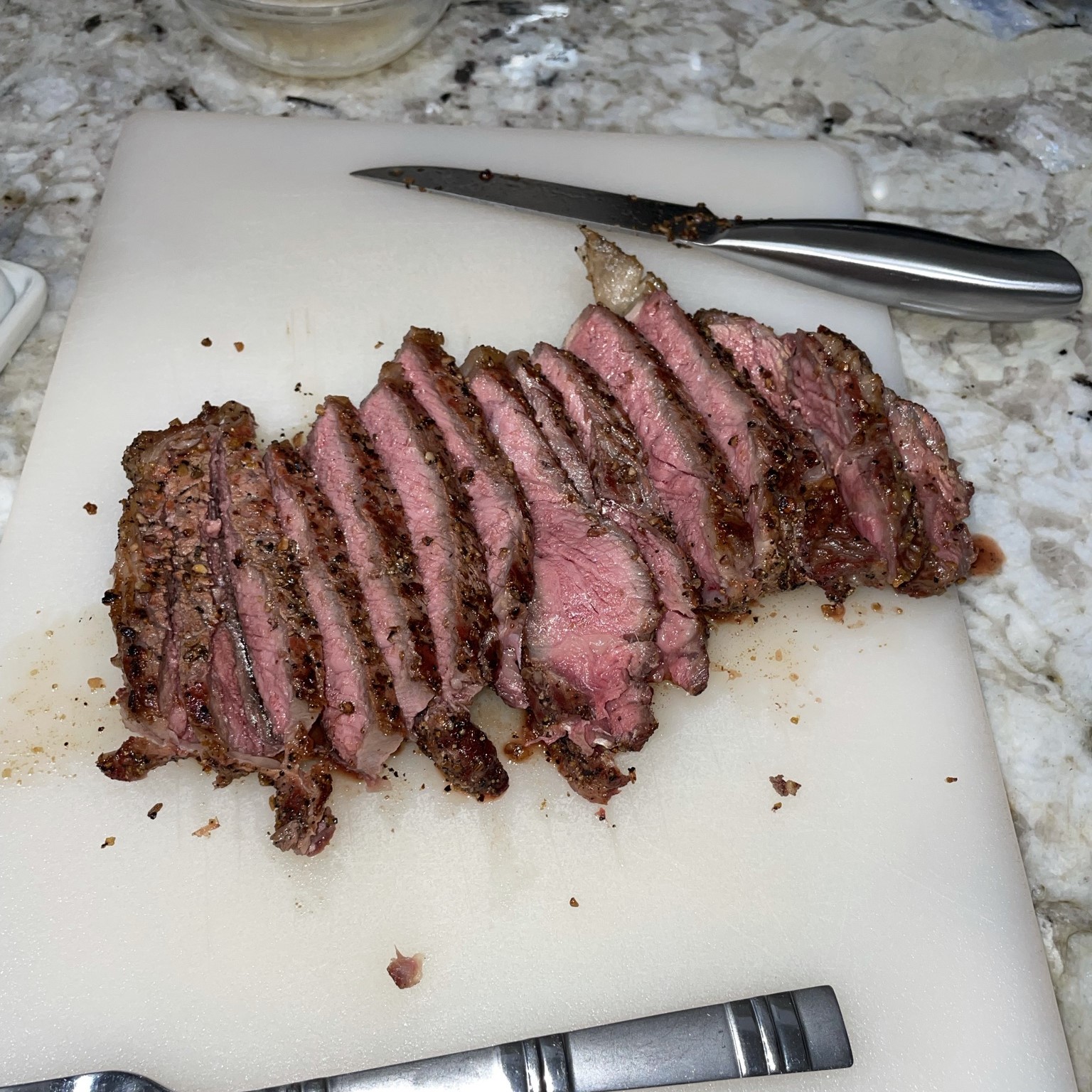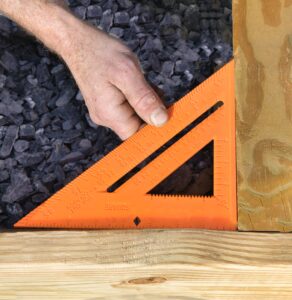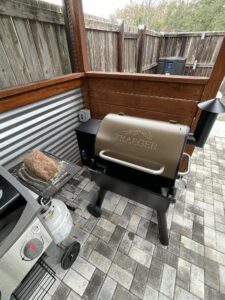The reverse sear steak method is a game-changer for all steak lovers out there. This technique, which is particularly wonderful for cooking a reverse sear ribeye steak, involves slowly heating the steak and then searing it for a perfect finish. When you cook a reverse seared steak, you get a beautifully tender and juicy inside with a richly browned, crispy crust on the outside. Now, imagine applying this method to a reverse seared ribeye. Yes, a reverse seared ribeye steak! It’s an incredible way to unlock all the rich, beefy flavors of the ribeye, making every bite a delight. Let’s dive deeper into mastering the art of reverse searing.
Table of Contents

What is Reverse Searing?
Reverse searing is a simple, yet amazing technique that can take your steak game to a whole new level. The method starts by cooking the steak at a low temperature and then finishing it off with a quick, high-heat sear.
This is why we call it ‘reverse’ – because traditionally, you’d do it the other way around, searing it first and then finishing it off in the oven.
This slow and steady approach, especially when applied to a reverse sear ribeye steak, results in a steak with a mouth-watering, crispy crust on the outside, while keeping the inside perfectly tender and juicy.
Think of reverse searing as the secret to creating a steak that’s cooked just right – from edge to edge.
Traditionally, a reverse seared steak would involve an oven for the slow cooking stage and then a skillet for the searing phase. However, I’ve added a little twist to this approach.
Instead of an oven, I use a Weber grill with a smoker box to cook the steak using indirect heat.

The Weber Spirit II E-310 Gas Grill is a cooking enthusiast’s dream, combining space, heat distribution, and unique features for exceptional grilling. Its three burners, ample cooking area, and GS4 grilling system ensure your reverse sear steak or ribeye is cooked to perfection. The addition of flavorizer bars infuses each bite with a smoky undertone, transforming your grilling into a gourmet experience.
This process gives the reverse seared steak its unique smoky flavor. Then, to get that perfect sear, I crank up my Blackstone flat top to high heat and sear the steak quickly on either side.
The result? A perfectly reverse seared steak with a smokey flavor that is sure to impress your taste buds!

Advantages of Reverse Searing a Steak
The beauty of the reverse sear steak technique lies in its ability to cook the steak evenly, so every bite is just as delicious as the last. There’s no more worrying about a steak that’s burned on the outside and raw on the inside.
This is because reverse searing starts with slow cooking, allowing heat to penetrate the steak uniformly. When you finish with a high-heat sear, you lock in all the juices and flavors, leading to a reverse seared steak that’s crispy on the outside and succulent on the inside.
For those who love a good ribeye, the reverse sear ribeye steak is a game-changer. This method enhances the rich, marbled flavors of a ribeye.
The slow cooking process melts the fat evenly, infusing the meat with its flavors.
Once you sear it on high heat, you get a reverse seared ribeye that’s crispy on the outside, juicy on the inside, and bursting with flavor.

Experience the art of perfect reverse searing with the Blackstone 1883 Grill Station. Crank it to max heat, add your steak, and enjoy a flawless sear!
How Is Reverse Searing Different Than Traditional Searing?
Traditional searing involves cooking your steak on high heat first to form a crust, and then lowering the temperature to cook the inside. But this often leads to the outer layers being overcooked by the time the center reaches the desired temperature.
On the other hand, reverse searing – cooking the steak slowly first and then searing it – ensures a more evenly cooked steak. You get a reverse seared steak that’s cooked just the way you like it, all the way through.
The final high-heat sear adds a deliciously crispy crust that seals in all the juices.
Whether you’re preparing a reverse sear steak or a reverse seared ribeye, this method guarantees a steak that’s crispy, juicy, and full of flavor every single time.
The Weber Hickory Wood Chips, derived from hickory trees, add a robust, smoky flavor to your steaks. Simply add a handful to your Weber Smoker Box for an authentic hickory-smoked barbecue experience.
How to Reverse Sear a Ribeye Steak
Here’s an easy guide for you to cook a perfect reverse sear ribeye steak.
Part One – The Slow Cook
- Choose the right steak:
Start with a thick, quality ribeye steak. The thicker the steak, the better the reverse searing method works.
- Preheat your Weber BBQ:
Preheat your Weber BBQ with a smoker box to a low temperature, around 225°F. This low and slow cooking is what makes a reverse seared steak so tender and juicy.
- Season the steak:
Season your reverse sear ribeye steak generously with your favorite spices. Don’t forget both sides!
- Slow cook the steak:
Place the steak on the BBQ, away from the heat. Let it cook slowly until it reaches an internal temperature of 125°F for medium-rare or 135°F for medium. This is the key to a perfect reverse seared ribeye.

The Weber iGrill 3 is a transformative grilling gadget. Its innovative Bluetooth technology lets you monitor your steak’s temperature on your smartphone, ensuring perfect cooking each time. Eliminate guesswork and enhance grilling precision with its real-time data and temperature alerts.
Part Two – The Sear
- Preheat your Blackstone Flattop:
While the steak is slowly reaching its perfect internal temperature, preheat your Blackstone flat top grill for the searing process. You want it to be smoking hot for the perfect sear.
- Sear the steak:
Once your steak has reached its desired internal temperature, it’s time to sear it on the Blackstone flat top grill. Sear each side of the steak for about a minute. This creates the crispy crust that makes a reverse seared steak so delicious.

Discover the secret to the perfect reverse sear with the Blackstone 5553 Pre-Seasoned Cast Iron Griddle Press Medium. This essential tool ensures consistent heat distribution and perfect searing, locking in the flavors of your ribeye steak for an unparalleled culinary experience. Don’t miss out – it’s my go-to for a flawless reverse sear!
- Rest and serve:
Let your steak rest for about 10 minutes before serving. This allows the juices to redistribute, making your reverse seared ribeye even more flavorful.

Remember, the reverse searing method may take a bit longer, but the results are worth it. You end up with a reverse seared steak that’s crispy on the outside, juicy on the inside, and bursting with flavors. Enjoy your cooking!
Tips and Tricks for the Perfect Reverse Seared Steak
Now that you’re familiar with the process of reverse searing, let’s take a closer look at some strategies to make your reverse seared ribeye steak even better.
The reverse searing technique is all about precision and patience. It’s not meant to be rushed.
It’s about slowly bringing the outer crust to that beautiful, crisp golden-brown, while keeping the inside of your steak juicy and tender.
When you’re ready to reverse sear a ribeye, remember to soak your wood chips before placing them in the smoker box. This is an essential step. Soaking the chips ensures they smoke and smolder instead of burning up quickly.
This creates a slow, steady smoke that infuses your steak with flavor.

The Weber Smoker Box, suitable for Weber Q 200/2000 and larger gas grills, enhances your grilling experience by infusing your meat with smoky flavors. Easy to use, just fill it with wood chips, place on the grill, and let the heat do the rest. Transform your gas grill into a smoker seamlessly with this efficient accessory.
As your reverse sear ribeye steak cooks, keep a close eye on the internal temperature. You’ll want to remove the steak from the grill or oven when it’s about 5 degrees less than your desired final temperature.
This is because the steak continues to cook slightly even after it’s removed from the heat.
Finally, don’t forget to let your reverse seared steak rest before the final sear. This rest period allows the internal temperature to reduce by about 5 degrees. Plus, it gives the juices within the steak time to redistribute.
This results in a reverse seared ribeye bursting with juicy flavor on the inside and deliciously crispy on the outside. Remember, perfecting the reverse sear technique might take some time, but the results are absolutely worth it!
Wrapping Up: The Art of a Reverse Sear Steak
Reverse searing is a fantastic way to cook your next steak. Whether it’s a reverse sear steak or a reverse sear ribeye steak, this method ensures a flavorful, tender, and juicy result.
We’ve seen how the reverse seared steak technique involves slow cooking before a high heat sear, creating a beautiful, crispy crust that’s simply irresistible.
The reverse searing technique gives you a steak that’s crispy on the outside, while retaining all the delicious juices and flavors on the inside.
So, next time you’re planning a steak dinner, remember to try a reverse seared steak. With a little patience, you’ll end up with a reverse seared ribeye that’s restaurant-quality right from your home kitchen or outdoor grill area.
Here’s to your next delicious, perfectly seared steak!
Uncover a world of grilling mastery in our dedicated grilling section. It’s packed with a wealth of posts offering tips and tricks for a range of methods, including flat top grilling to smoking.
Elevate your BBQ game by clicking here to explore these resources.
Don’t wait, your grilling adventure awaits!






